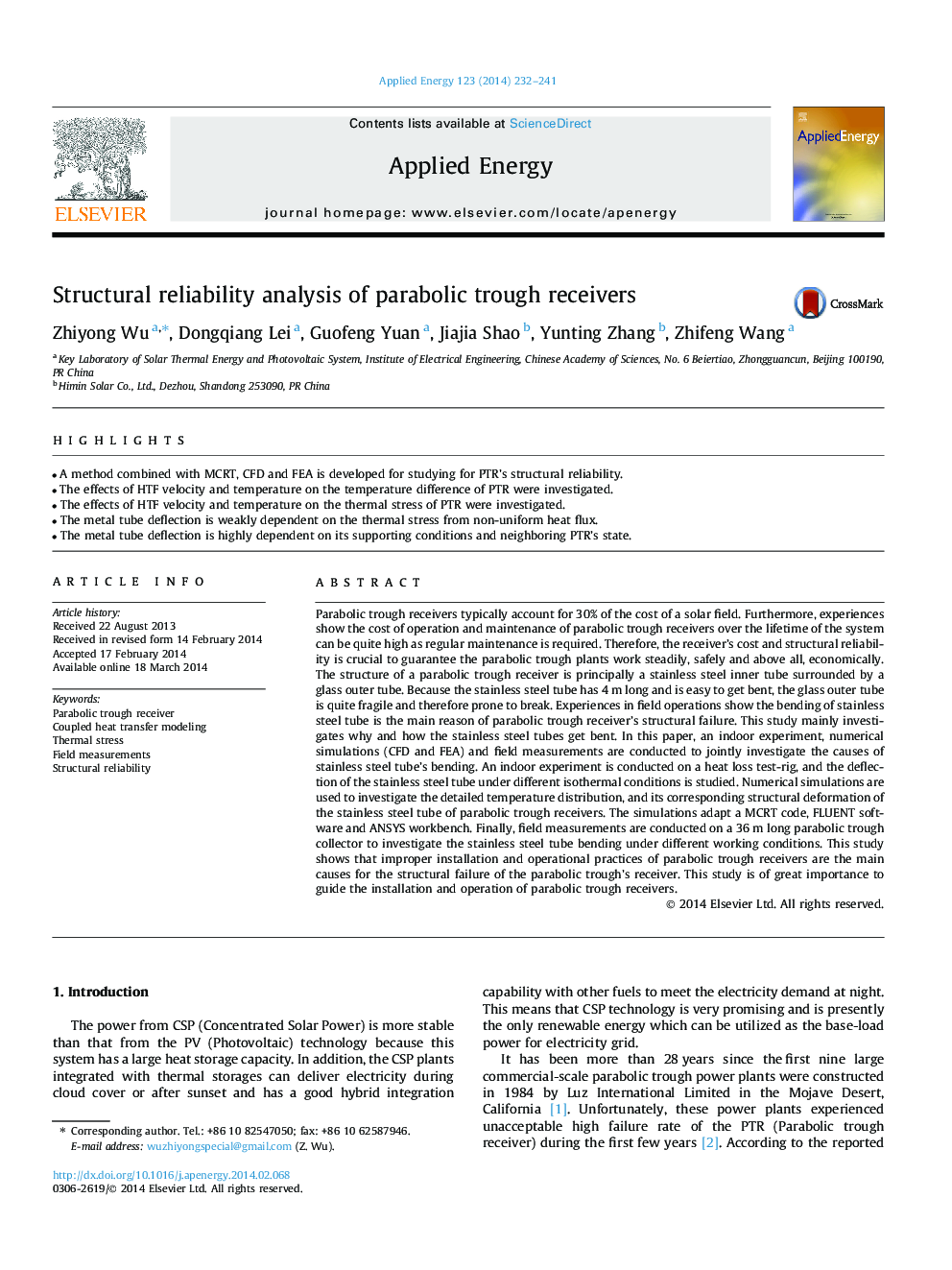| Article ID | Journal | Published Year | Pages | File Type |
|---|---|---|---|---|
| 6690420 | Applied Energy | 2014 | 10 Pages |
Abstract
Parabolic trough receivers typically account for 30% of the cost of a solar field. Furthermore, experiences show the cost of operation and maintenance of parabolic trough receivers over the lifetime of the system can be quite high as regular maintenance is required. Therefore, the receiver's cost and structural reliability is crucial to guarantee the parabolic trough plants work steadily, safely and above all, economically. The structure of a parabolic trough receiver is principally a stainless steel inner tube surrounded by a glass outer tube. Because the stainless steel tube has 4Â m long and is easy to get bent, the glass outer tube is quite fragile and therefore prone to break. Experiences in field operations show the bending of stainless steel tube is the main reason of parabolic trough receiver's structural failure. This study mainly investigates why and how the stainless steel tubes get bent. In this paper, an indoor experiment, numerical simulations (CFD and FEA) and field measurements are conducted to jointly investigate the causes of stainless steel tube's bending. An indoor experiment is conducted on a heat loss test-rig, and the deflection of the stainless steel tube under different isothermal conditions is studied. Numerical simulations are used to investigate the detailed temperature distribution, and its corresponding structural deformation of the stainless steel tube of parabolic trough receivers. The simulations adapt a MCRT code, FLUENT software and ANSYS workbench. Finally, field measurements are conducted on a 36Â m long parabolic trough collector to investigate the stainless steel tube bending under different working conditions. This study shows that improper installation and operational practices of parabolic trough receivers are the main causes for the structural failure of the parabolic trough's receiver. This study is of great importance to guide the installation and operation of parabolic trough receivers.
Related Topics
Physical Sciences and Engineering
Energy
Energy Engineering and Power Technology
Authors
Zhiyong Wu, Dongqiang Lei, Guofeng Yuan, Jiajia Shao, Yunting Zhang, Zhifeng Wang,
